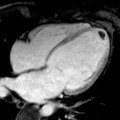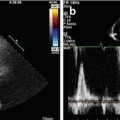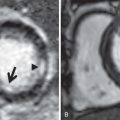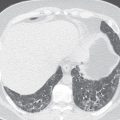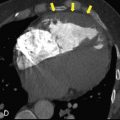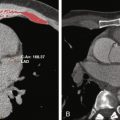Radiology practices face mounting pressure from claim rejections every day. These denials drain revenue and consume valuable staff time. Proper audit preparation serves as a shield against these costly setbacks. Understanding how audits work can transform your billing process entirely.
The Current State of Radiology Claim Rejections
The healthcare industry struggles with claim denials at alarming rates. According to recent industry data, approximately 15% of all medical claims face initial denial. For radiology specifically, the rejection rate often exceeds this average. The American Medical Association reports that practices lose nearly $5 million annually due to claim denials.
These numbers highlight a critical problem within radiology billing operations. Every rejected claim means delayed payment and additional administrative work. Your practice deserves better outcomes and smoother revenue cycles.
Understanding the Root Causes of Claim Rejections
Most radiology claim rejections stem from preventable errors and oversights. Incorrect patient information creates immediate red flags for insurance companies. Missing or invalid insurance details trigger automatic denials without review.
Coding errors represent another major culprit behind claim rejections. Using outdated CPT codes leads to instant denial responses. Mismatched modifiers confuse payers and result in payment refusals. Lack of medical necessity documentation raises questions about treatment appropriateness.
Authorization issues plague radiology practices more than many other specialties. Pre-authorization requirements vary widely across different insurance carriers and plans. Missing referrals from primary care physicians cause immediate claim failures.
The Power of Proactive Audit Preparation
Regular internal audits catch errors before claims reach insurance companies. This proactive approach saves time, money, and frustration for everyone. Think of audits as quality control checkpoints in your billing workflow.
Systematic audit preparation involves reviewing documentation standards across all procedures. Your team should examine coding accuracy for common radiology services. Verify that medical necessity is clearly documented in every report. Check that patient demographics match insurance card information exactly.
Creating audit checklists ensures nothing falls through the cracks during reviews. These tools guide staff through comprehensive evaluation of claim components. Consistent use of checklists builds muscle memory for quality work.
Building a Strong Audit Framework
Start by establishing clear documentation guidelines for all radiologists and technologists. Every imaging report should include specific clinical indications for studies. Radiologists must document findings thoroughly and link them to diagnoses.
Train your billing team on current CPT and ICD-10 coding requirements. Regular education sessions keep everyone updated on coding changes. Many practices partner with a radiology billing company to ensure expertise. This collaboration brings specialized knowledge that prevents common coding mistakes.
Implement regular chart reviews to identify patterns in claim rejections. Look for recurring issues with specific payers or procedure types. Address these patterns through targeted training and process improvements.
Essential Elements of Radiology Audit Preparation
Verification of insurance eligibility must happen before every scheduled procedure. Real-time eligibility checks prevent surprises after services are already rendered. Confirming coverage details protects both patients and your practice financially.
Pre-authorization tracking requires dedicated attention and systematic follow-up procedures. Create a database that monitors authorization status for scheduled studies. Set up alerts for expiring authorizations to prevent last-minute scrambles.
Documentation audits should focus on medical necessity justification for every study. Review physician orders to ensure they contain adequate clinical information. Confirm that radiology reports address the specific clinical questions posed.
Coding audits verify that selected codes accurately reflect services provided. Cross-reference procedures performed with codes submitted on claims. Ensure modifiers are applied correctly based on payer-specific guidelines.
Implementing Technology for Audit Success
Modern billing software includes built-in audit tools and error detection features. These systems flag potential problems before claim submission occurs. Automated scrubbing catches missing information and common coding errors instantly.
Consider investing in specialized radiology information systems with billing integration. These platforms streamline workflow from order entry through final payment. Real-time claim status tracking helps identify rejection patterns quickly.
Many successful practices work with a radiology billing company that uses advanced technology. These partners provide sophisticated analytics and reporting capabilities beyond basic software. Their expertise helps identify improvement opportunities you might otherwise miss.
Creating an Audit Schedule That Works
Monthly audits provide regular touchpoints without overwhelming your billing staff. Focus each month on different aspects of your billing process. Rotate through documentation, coding, authorization, and payment posting reviews systematically.
Quarterly comprehensive audits examine broader trends and overall claim performance. These deeper dives reveal systemic issues requiring strategic solutions. Use quarterly results to set goals and priorities for the coming months.
Annual external audits bring fresh perspectives from independent reviewers. Outside auditors identify blind spots your internal team might miss. Their findings validate your internal processes or highlight areas needing attention.
Training Your Team for Audit Readiness
Ongoing education keeps your billing team sharp and current on regulations. Subscribe to coding update services that deliver changes as they occur. Attend webinars and conferences focused on radiology billing best practices.
Role-specific training ensures everyone understands their contribution to clean claims. Front desk staff need different skills than coders and billing specialists. Tailor education to each role’s responsibilities and daily tasks.
Create peer review processes where team members check each other’s work. This collaborative approach catches errors while building collective knowledge. Regular case discussions help everyone learn from both successes and mistakes.
Measuring the Impact of Audit Preparation
Track your claim acceptance rate as a key performance indicator. Calculate the percentage of claims paid on first submission monthly. Set targets for improvement and celebrate when you reach milestones.
Monitor days in accounts receivable to measure cash flow improvements. Effective audit preparation should steadily reduce this important metric. Faster payment cycles improve your practice’s financial health significantly.
According to the Medical Group Management Association, practices with strong audit programs see rejection rates below 5%. This benchmark represents the gold standard for radiology billing operations. Your practice can achieve similar results through consistent audit preparation.
Common Pitfalls to Avoid
Waiting until problems arise before implementing audit procedures creates unnecessary struggles. Reactive approaches cost more and deliver worse outcomes than prevention. Start audit preparations immediately, regardless of current rejection rates.
Failing to document audit findings and corrective actions wastes valuable insights. Keep detailed records of issues discovered and solutions implemented. This documentation proves invaluable for tracking progress over time.
Neglecting to follow up on audit findings undermines the entire process. Identifying problems without correction accomplishes nothing meaningful for your practice. Create action plans with deadlines and accountability for every audit.
Conclusion
Audit preparation transforms radiology billing from reactive firefighting to proactive excellence. The investment in systematic audits pays dividends through reduced rejections. Your practice gains financial stability and operational efficiency simultaneously.
Start small if necessary, but start today with basic audit processes. Build momentum gradually as your team develops audit skills and habits. Remember that every claim submitted correctly the first time saves money. Every prevented rejection preserves staff time for more valuable activities.
The path to reduced radiology claim rejections begins with commitment to preparation. Your patients, staff, and bottom line all benefit from this dedication. Embrace audit preparation as an essential component of operational excellence.
Stay updated, free articles. Join our Telegram channel

Full access? Get Clinical Tree


